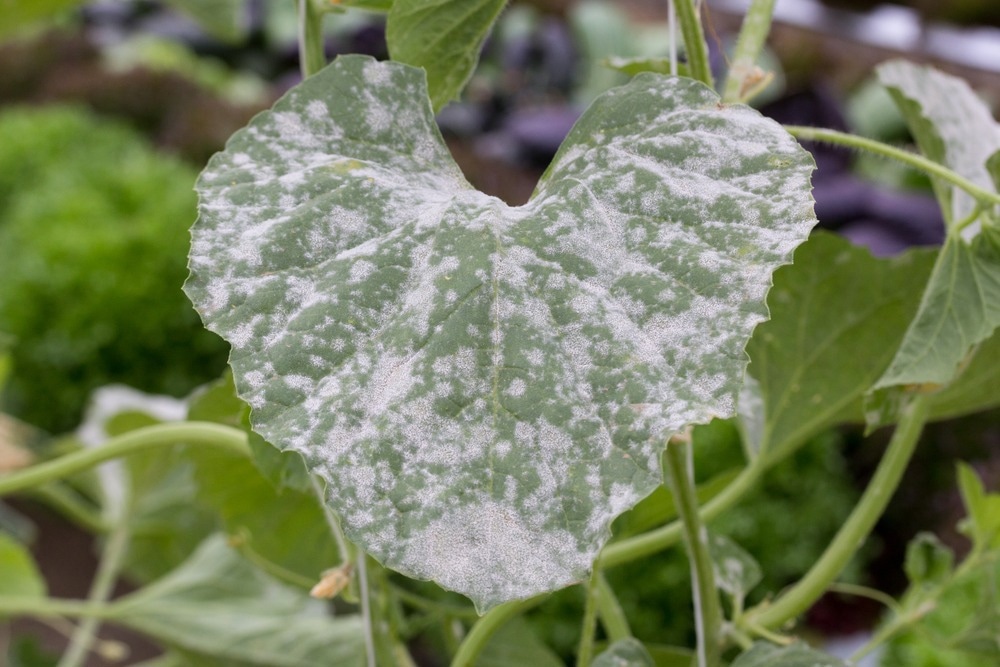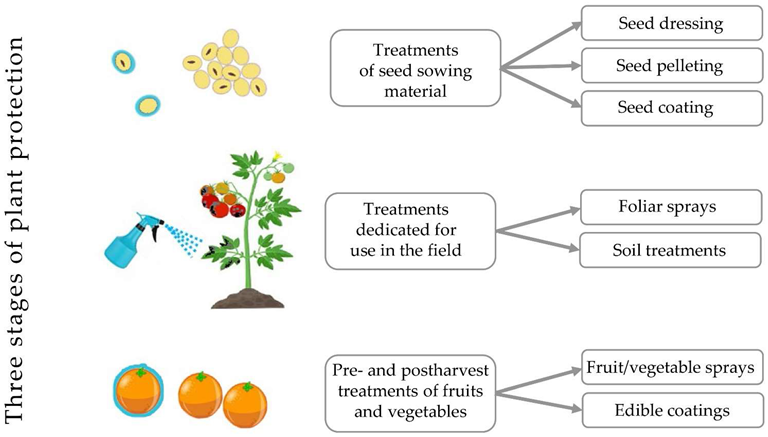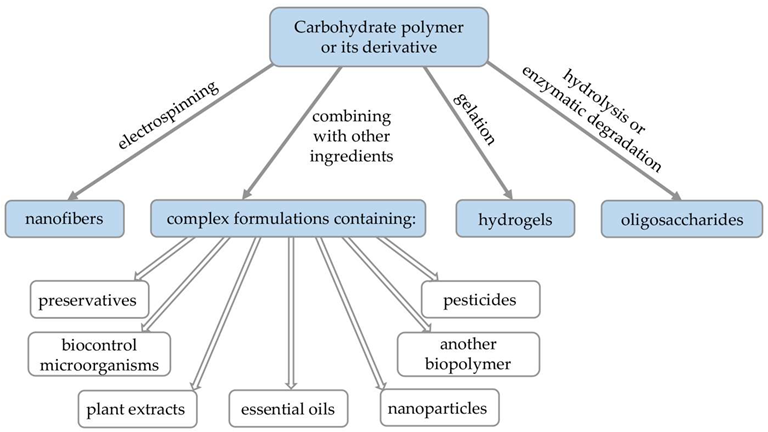In a paper recently published in the open-access journal Polymers, researchers reviewed the merits and demerits of protecting plants against pathogenic fungi using carbohydrate biopolymers. They assessed three polysaccharides namely alginate, cellulose, and chitosan, and evaluated their applications in crop protection.

Study: The Use of Carbohydrate Biopolymers in Plant Protection against Pathogenic Fungi. Image Credit: AJCespedes/Shutterstock.com
Background
Modern agriculture has the challenge of producing crops for the increasing population and the reduction of crops by pathogens and pests. Oomycetes and fungi are considered to be the most harmful crop pathogens and are an ever-increasing threat to global food security due to their ability to cover newer regions through climate change or transport.
The plant protection industry witnessed rapid development upon the inception of the first synthetic organic fungicides in the 1940s. However, extensive usage of fungicides and pesticides also entailed contamination of aquatic and terrestrial ecosystems as well as adverse effects on human health.
Carbohydrate polymers can function as alternatives to traditional fungicides if used in the development of plant protection products. These biopolymers are readily available from natural sources and have suitable applications in organic farming due to their non-toxicity and biodegradability.

Stages and forms of antifungal plant protection applications which can be based on carbohydrate biopolymers. Image Credit: Korbecka-Glinka, G et al., Polymers
Common Carbohydrate Biopolymers
This review focused on three common biopolymers: alginate, chitosan, and cellulose. Chitosan, a polycationic polymer derived from chitin, is capable of triggering defensive mechanisms against pathogens in plants. Being more potent against fungi than bacteria, chitosan is extensively used in pre-harvest as well as post-harvest crop treatments to inhibit microbial infections.
Treatment of seeds with a coating or soaking of the seeds with chitosan showed impeded sporulation and mycelium growth and stimulation of seedling growth. Chitosan-based nanoparticles (NPs) also exhibited effective damage to the pathogen. Studies by Madanipour et al. inferred that edible chitosan coatings could also be an effective alternative in reducing post-harvest losses in fruits such as apples.
Alginates have exceptional thickening and gelling properties while also possessing low toxicity, favorable biodegradability, and biocompatibility. Alginate coatings are effective oxygen barriers, stimulating the development of the root systems and aerial parts of plants, and thereby increasing their pathogen resistance. The antifungal properties of the alginate coatings can also be enhanced with the addition of nanomaterials.
Cellulose derivatives are often used as binders and carriers of biocontrol agents and active ingredients. However, they are also capable of forming biodegradable membranes of plant material acting as protective barriers. Cellulose ethers such as carboxymethyl cellulose (CMC) are commonly used in seed coatings with fungicides. Edible coatings with hydroxypropyl methylcellulose (HPMC) are used for coating vegetables and fruits but are often combined with preservatives.
Advantages and Disadvantages of Carbohydrate Biopolymers
The most prominent advantages of alginate, cellulose, and chitosan are high availability and ease of sourcing. These biopolymers are also highly biodegradable owing to their natural origins. This makes them suitable for applications in organic agriculture. Additionally, their non-toxicity makes them safe for consumption.
However, carbohydrate biopolymers are less widely utilized for plant protection because of numerous causes. Firstly, they can be readily degraded by other microorganisms, thus rendering them a limited shelf life. A preservative is also required to maintain their bioactivities and biochemical properties. Secondly, due to varying sources, carbohydrate biopolymers can have high degrees of polydispersity and structural heterogeneity, making it a challenge to provide assertive information on their safety and efficiency. Thirdly, the refining of carbohydrate biopolymers from raw materials is expensive and inefficient.
Researchers could differentiate between the properties and applications of the three biopolymers. Although chitosan is expensive, it is frequently used as an antifungal agent due to its direct antifungal action. Because of its hydrophilic properties, alginate is often used in combination with biocontrol fungi and bacteria. Moreover, cellulose is the most inexpensive and readily available resource, but its application requires modifications owing to its low water solubility and deficiency of functional groups.

Alternative modification methods of carbohydrate polymers which can be used in the process of preparing antifungal plant protection formulations. Image Credit: Korbecka-Glinka, G et al., Polymers
Conclusions
To summarize, carbohydrate biopolymers are apt as natural alternatives to chemical fungicides due to their biodegradability, non-toxicity, and biocompatibility. Numerous studies showed that these biopolymers could be versatile plant protection resources while being effective elicitors, antifungal compounds, and matrices or carriers for controlled discharge of active constituents.
The extensive use of chemical pesticides and fungicides has a negative impact on human health, non-target organisms, and the environment. According to the authors, the rising concerns regarding these issues may motivate further studies that enhance and standardize the methods of carbohydrate biopolymer production while overcoming commercialization hurdles for subsequent products.
Furthermore, the antifungal activity of these biopolymers can be improved through the development of more effective and complex formulations that combine other antifungal agents with these biopolymers. However, these products must be evaluated for their toxicity and safety prior to their introduction in agricultural applications.
Disclaimer: The views expressed here are those of the author expressed in their private capacity and do not necessarily represent the views of AZoM.com Limited T/A AZoNetwork the owner and operator of this website. This disclaimer forms part of the Terms and conditions of use of this website.
Sources:
Korbecka-Glinka, G.; Piekarska, K.; Wiśniewska-Wrona, M. The Use of Carbohydrate Biopolymers in Plant Protection against Pathogenic Fungi. Polymers 2022, 14, 2854. https://www.mdpi.com/2073-4360/14/14/2854
Madanipour, S. et al. Influence of postharvest application of chitosan combined with ethanolic extract of liquorice on shelflife of apple fruit. J. Environ. Health Sci. Eng. 2019, 17, 331–336.